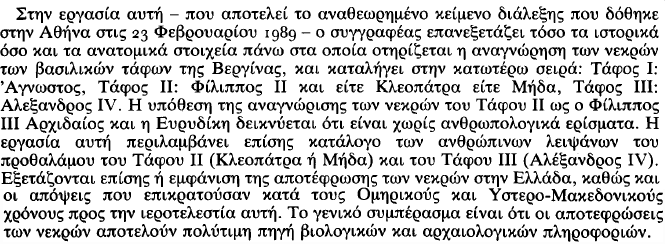Article contents
Dust and Damn'd Oblivion: A Study of Cremation in Ancient Greece
Published online by Cambridge University Press: 27 September 2013
Abstract
In this paper – the revised text of a public lecture given in Athens on 23 February 1989 – the author reviews both the historical and anatomical evidence for identifying the occupants of the royal tombs at Vergina as: Tomb I: not known; Tomb II: Philip II and either Cleopatra or Meda; Tomb III: Alexander IV. The case for Philip III Arrhidaios and Eurydice in Tomb II is shown to be anthropologically weak. The paper also includes a catalogue of the human remains from Tomb II antechamber (Cleopatra or Meda) and Tomb III (Alexander IV). The arrival of cremation in Greece, and both Homeric and later Macedonian attitudes to the rite are also discussed. The general conclusion is that cremations are a valuable source of biological and archaeological information.

- Type
- Articles
- Information
- Copyright
- Copyright © The Council, British School at Athens 1990
References
Bibliography and abbreviations
- 5
- Cited by




